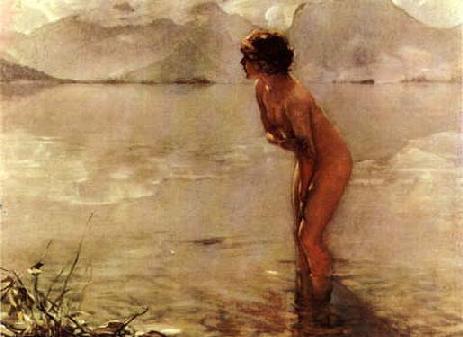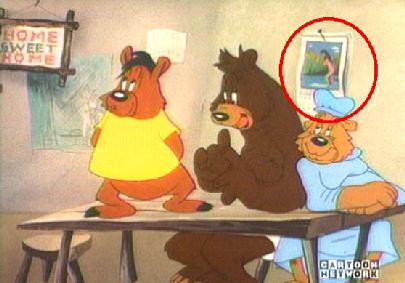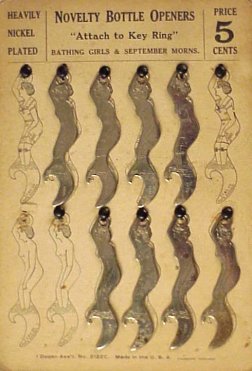|
Harry Reichenbach is best known for the publicity stunts he used to bring
crowds into early B-movies:
- Setting apes and lions loose in big name hotels to get the
Tarzan movies mentioned in the press.
- Hiring a woman to fall into a “trance” after viewing one
spooky film, then making sure there was enough rampant speculation
about whether movies could hypnotize people that everyone wanted to
try it out.
- Having actors pose as a Turkish rescue party coming to the
U.S. to return a young woman who
had eloped with an American soldier to her scheduled royal wedding.
Allegedly hush-hush, details of this mission were leaked to the eager
media, whose scoops turned into big publicity for the upcoming film
The Virgin of Stamboul.
But he describes what was perhaps his most poetic hack in the book
Phantom Fame:
I applied for work at a small art shop that had printed a lithograph of a
nude girl standing in a quiet pool. The picture sold at ten cents apiece
but nobody would buy it. I could earn my month’s rent if I had an
idea for disposing of the two thousand copies in stock. It occurred to me
to introduce the immodest young maiden to
Anthony Comstock, head of
the Anti-Vice Society and arch-angel of virtue. At first he refused to
jump at the opportunity to be shocked. I telephoned him several times,
protesting against a large display of the picture which I myself had
installed in the window of the art shop. Then I arranged for other people
to protest and at last I visited him personally. “This picture is
an outrage!” I cried. “It’s undermining the morals of
our city’s youth!”
When we arrived in front of the store window, a group of youngsters I had
hired especially for this performance at fifty cents apiece, stood
pointing at the picture, uttering expressions of unholy glee and making
grimaces too sophisticated for their years. Comstock swallowed the scene
and almost choked. “Remove that picture!” he fumed, and when
the shopkeeper refused, the Anti-Vice Society appealed to the courts. This
brought the picture into the newspapers and into fame. Overnight, the
lithograph that had been rejected as a brewer’s calendar, became a
vital national issue. Songs were written about it, actors wisecracked about
it, reformers denounced it, and seven million men and women bought copies
of it at a dollar apiece, framed it and hung it on the walls of their
homes. The name of the picture was “September Morn.” There
was no more immorality or suggestiveness to it than sister’s
photograph as a baby in the family album.
The painting, by Paul Chabas, went from being “rejected as a
brewer’s calendar,” to being, for a time, a celebrated icon on
par with the Mona Lisa. Curtis MacDougal, in Hoaxes, writes
that there “were ‘September Morn’ dolls, statues,
calendars and umbrella and cane heads; sailors
had the modest, shivering damsel tattooed on their hairy chests and amateur
artists drew their versions on bathroom floors,” to which
another commentator adds: “postcards,
candy boxes, cigar bands, cigarette flannels, pennants, [and]
suspenders.”
MacDougal ends by saying that “the most controversial nude of modern
times went on public exhibition in the Metropolitan Museum of Art”
in Manhattan where it can be seen to this day.
|



|




